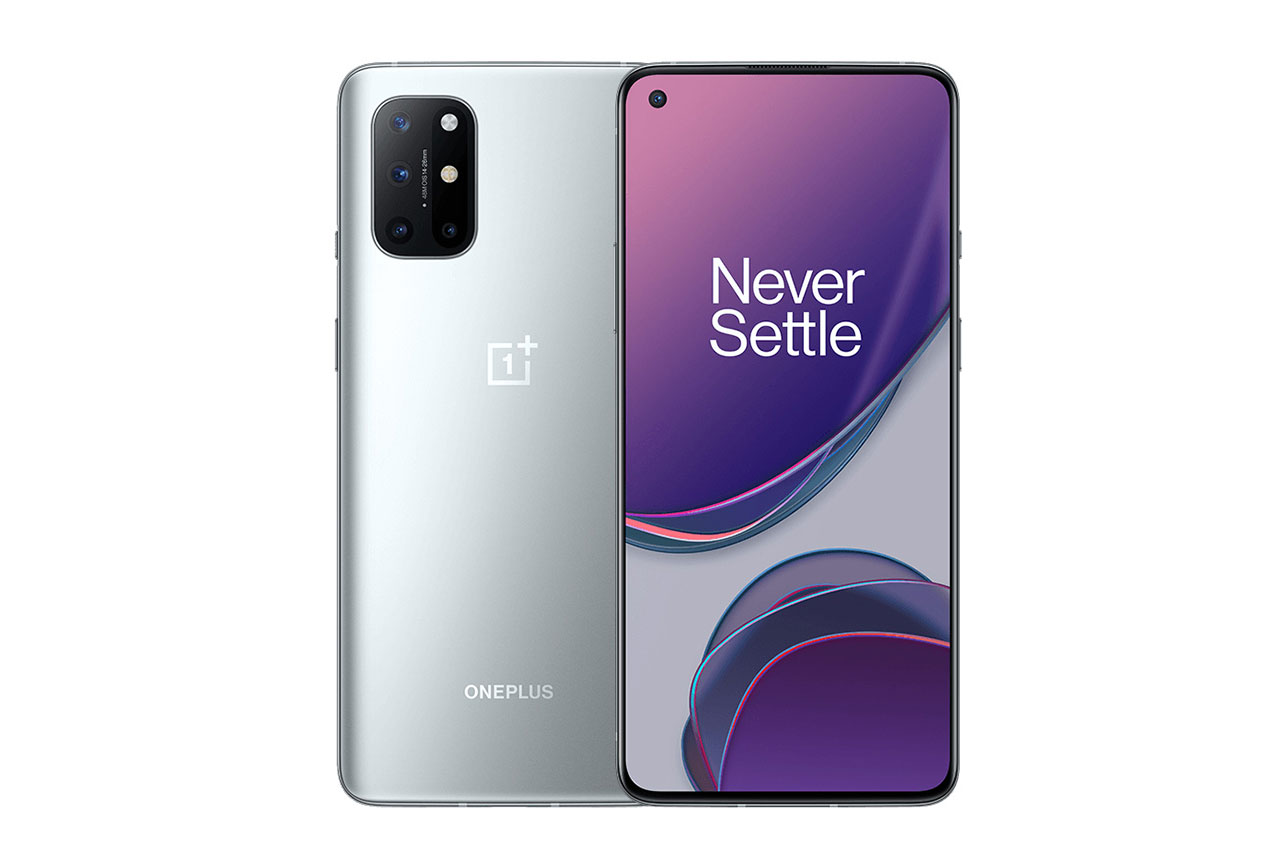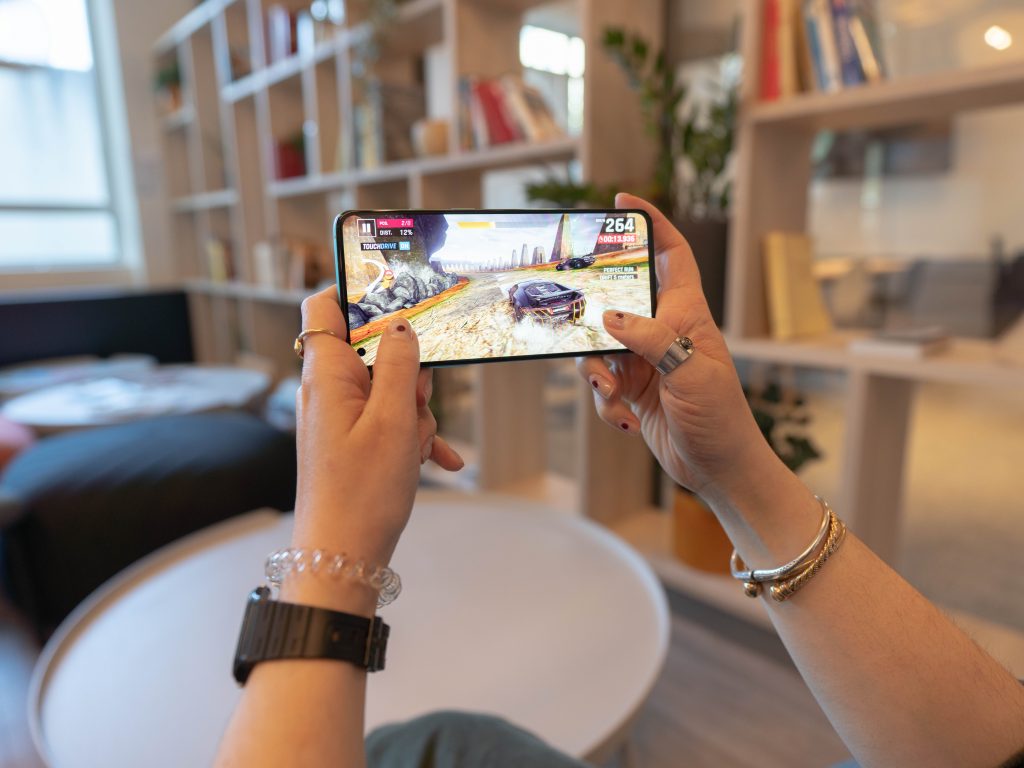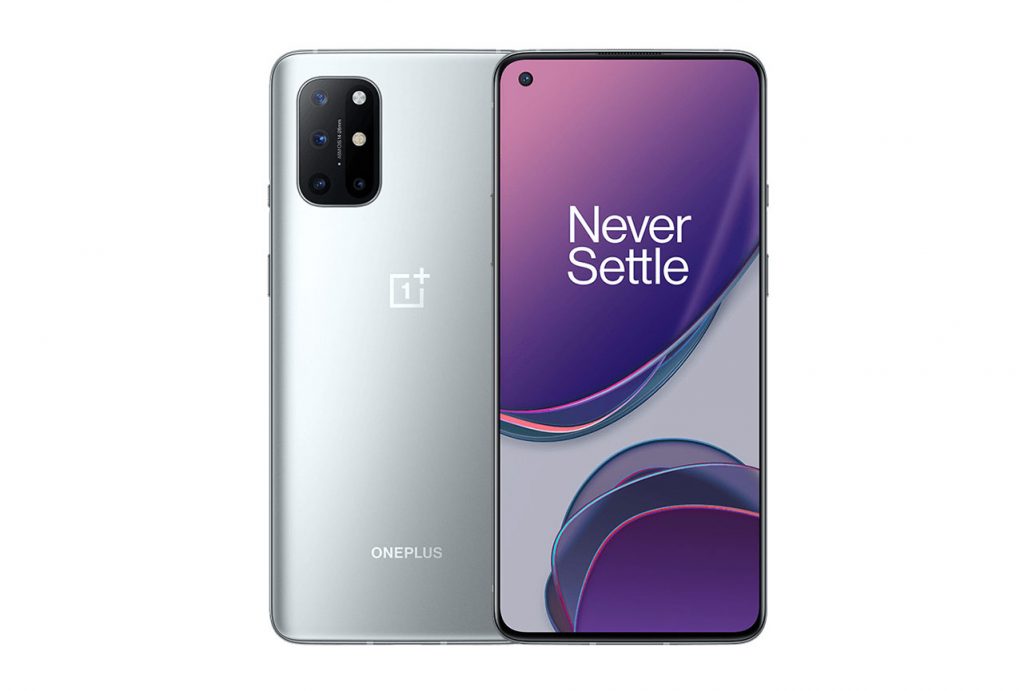The OnePlus 8T first appeared in October 2020 at a price point that puts it into our high-end ($400-599) category. Coming with a fast 65W charger, the phone has a 4500 mAh battery (an average size for this segment) and comes with a 1080 x 2400 AMOLED display with 120 Hz refresh rate, a quad-camera setup with 48 MP main camera, and a powerful Qualcomm Snapdragon 865 chipset.
We put the OnePlus 8T through our comprehensive Battery test protocol and will present the most important results of our tests in this review.
Key specifications:
- Battery capacity: 4500 mAh
- 65W charger included
- 6.55-inch, 1080 x 2400, 120 Hz AMOLED display
- Qualcomm Snapdragon 865 (7 nm) chipset, 5G
- Tested ROM / RAM combination: 128 GB + 8 GB
About DXOMARK Battery tests: For scoring and analysis in our smartphone battery reviews, DXOMARK engineers perform a variety of objective tests over a week-long period both indoors and outdoors. This article highlights the most important results of our testing. (See our introductory and how we test articles for more details about our smartphone Battery protocol.)
Test summary
Scoring
Sub-scores and attributes included in the calculations of the global score.

OnePlus 8T


Key performances
These key points are derived from the lab measurements during testing and do not figure into the overall score. The lab measurements, however, are used for the overall score.
 126th
126th
 28th
28th
Pros
- Very good charging performance
- Strong performance in on the go testing
- Lower consumption than the competition for phone calls
Cons
- Higher consumption than the competition for music streaming
- Higher consumption than the competition when the smartphone is charged but still plugged in
The OnePlus 8T showed excellent performance in our charging tests, going from a completely empty to a completely full battery in under 40 minutes, thanks to its fast 65W charger, which also brought it high marks in our 5-minute quick boost tests. However, its global battery performance was undercut by somewhat limited autonomy, with battery life lasting a bit less than two days under average conditions. As for specific use case comparisons, it did well when making phone calls and when streaming video, but did quite poorly when streaming music.
We compared the OnePlus 8T’s performance in several key categories with two other high-end devices, the Xiaomi Mi 10T Pro 5G and the Oppo Find X3 Lite; battery capacity, charger, display type and resolution, and processor specifications for all three devices are shown in the table below.
| OnePlus 8T | Xiaomi Mi 10T Pro 5G | Oppo Find X3 Lite | |
| Battery (mAh) | 4500 | 5000 | 4300 |
| Charger (W) | 65W | 33W | 65W |
| Display type | AMOLED | IPS LCD | AMOLED |
| Resolution | 1080 x 2400 | 1080 x 2400 | 1080 x 2400 |
| Processor | Qualcomm Snapdragon 865 (7 nm) | Qualcomm Snapdragon 865 (7 nm) | Qualcomm Snapdragon 765G (7 nm) |
Autonomy (52)
How long a battery charge lasts depends not only on battery capacity, but also other aspects of the phone’s hardware and software. The DXOMARK Battery autonomy score is composed of three performance sub-scores: (1) Stationary, (2) On the go, and (3) Calibrated use cases. Each sub-score comprises the results of a comprehensive range of tests for measuring autonomy in all kinds of real-life scenarios.
Both the OnePlus 8T and the Oppo Find X3 Lite achieved some 46 hours of autonomy in our typical usage scenario test versus 61 hours of autonomy from the Xiaomi Mi 10T Pro 5G.
Worth a mention is that while its battery linearity is not quite “what you see is what you get” (as with the Oppo Find X3 Lite), the OnePlus 8T’s battery indicator is fairly accurate, as its power doesn’t drop precipitously from 20% on down as it does on the Xiaomi Mi 10T Pro.

Let’s look more closely at the OnePlus’s performance in our autonomy sub-attributes.

Stationary
OnePlus 8T
50
104
A robot housed in a Faraday cage performs a set of touch-based user actions during what we call our “typical usage scenario” (TUS) — making calls, video streaming, etc. — 4 hours of active use over the course of a 16-hour period, plus 8 hours of “sleep.” The robot repeats this set of actions every day until the device runs out of power.
The OnePlus 8T provides 46 hours, or nearly two days in our TUS test, which places it in a dead heat with the Oppo Find X3 Lite — the difference between the two is all of 32 seconds! That said, both were left in the dust by the Xiaomi Mi 10T Pro 5G, which garnered 62 points for reaching 61 hours in its TUS test (versus 52 points for the OnePlus and 51 for the Oppo):

On the go
OnePlus 8T
61
96
Using a smartphone on the go takes a toll on autonomy because of extra “hidden” demands, such as the continuous signaling associated with cellphone network selection, for example. DXOMARK Battery experts take the phone outside and perform a precisely defined set of activities while following the same three-hour travel itinerary for each device.
The OnePlus 8T battery provided an average amount of autonomy in our on the go use cases, doing better than the competition for calling and camera (and that last — camera — is especially true when compared to the Xiaomi device). That said, it trailed both the Xiaomi and the Oppo when it came to our GPS tests.

Calibrated
OnePlus 8T
59
100
For this series of tests, the smartphone returns to the Faraday cage and our robots repeatedly perform actions linked to one specific use case (such as gaming, video streaming, etc.) at a time. Starting from an 80% charge, all devices are tested until they have expended at least 5% of their battery power.
The OnePlus 8T did very well when making 3G calls, reaching more than 28 hours (a lot of talking!). It was slightly better in 4G video streaming and video playback than the competition, but it did poorly when it came to music streaming.
Charging (94)
The DXOMARK Battery charging score is composed of two sub-scores: Full charge and Quick boost. Full charge tests assess the reliability of the battery power gauge; measure how long it takes to charge a battery from 0 to 80% capacity and from 80 to 100%; and measure how long and how much power the battery takes to go from an indicated 100% to an actual full charge. With the phone at different charge levels (20, 40, 60, 80%), Quick boost tests measure the amount of charge the battery receives after being plugged in for 5 minutes.
In our charging attribute, the OnePlus 8T racked up 94 points over the Xiaomi Mi 10T Pro 5G’s 79 and the Oppo Find X3 Lite’s 92. (The OnePlus and Oppo come with 65W chargers, compared to the Xiaomi’s 33W charger.)

Full charge
OnePlus 8T
95
121
In the graph below, note that it is normal for charging to begin slowly as a means of protecting the battery, and is an indication that the depth of discharge was significant:
The OnePlus 8T’s total charging time from a completely empty to a completely full battery is 39 minutes, which is a little bit better than the Oppo FindX3 Lite (42 minutes), and much better than Xiaomi Mi10T Pro (1 hour 9 minutes) — unsurprising, again because of the big difference in chargers.

Quick boost
OnePlus 8T
86
111
By plugging in the OnePlus device for 5 minutes when it has a battery charge under 50%, users will gain more than 5 hours of autonomy. Perhaps of greater interest to gaming fanatics, at least, is that when its battery is near death’s door, the 8T needs only 17 seconds to gain 1% of battery life — and that is the quickest charge of the three devices: the Oppo comes in a relatively close second (24 seconds), but it takes the Xiaomi 2.5 minutes for 1% more power.
| OnePlus 8T | Xiaomi Mi 10T Pro 5G | Oppo Find X3 Lite | ||
| Autonomy boost (hh:mm) | 20% | 5:42 | 3:50 | 5:56 |
| 40% | 5:17 | 3:58 | 5:27 | |
| 60% | 4:22 | 3:48 | 3:33 | |
| 80% | 2:30 | 3:23 | 3:05 | |
| Percentage boost | 20% | 17.9 % | 9.5 % | 18.9 % |
| 40% | 16.6 % | 9.9 % | 17.4 % | |
| 60% | 13.7 % | 9.5 % | 11.3 % | |
| 80% | 7.8 % | 8.4 % | 9.8 % | |
| Energy consumed | 20% | 3847 mWh | 2416 mWh | 3983 mWh |
| 40% | 3565 mWh | 2498 mWh | 3668 mWh | |
| 60% | 2941 mWh | 2397 mWh | 2384 mWh | |
| 80% | 1685 mWh | 2131 mWh | 2069 mWh |
Efficiency (77)
The DXOMARK power efficiency score consists of two sub-scores, Charge up and Discharge rate, both of which combine data obtained during robot-based typical usage scenario testing, outdoor mobility testing, charging evaluation, and power measurements, and then take into consideration the device’s battery capacity.

Charge up
OnePlus 8T
81
105
At 87%, the OnePlus 8T’s charger showed very good efficiency, if behind the Xiaomi device’s 90%. With slightly more than 81% nominal efficiency (which includes not just the charger but also internal smartphone circuits), the OnePlus beats both the Xiaomi (76%) and the Oppo (79%), and is one of the best for this sub-attribute in our database so far.

Discharge
OnePlus 8T
74
121
The OnePlus 8T’s overall discharge rate during active hours is slightly higher than the competition’s, although its nighttime discharge rate is in line with the competition. It shows considerably lower use of power than the competition when making 3G calls.
Conclusion
The OnePlus 8T with its 65W charger provides both overall fast charging and great quick boosts of power. Where it falls a bit short is in autonomy, particularly in comparison with the Mi 10T Pro, where the 8T lags behind by more than half a day in average use. However, the tradeoff between autonomy and charging among the three phones results in a virtual tie, with the OnePlus only one point behind the Xiaomi and 3 points ahead of the Oppo in the high-end segment.



DXOMARK encourages its readers to share comments on the articles. To read or post comments, Disqus cookies are required. Change your Cookies Preferences and read more about our Comment Policy.